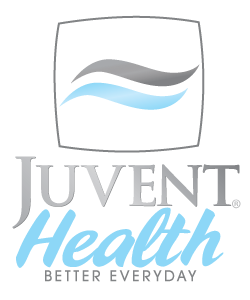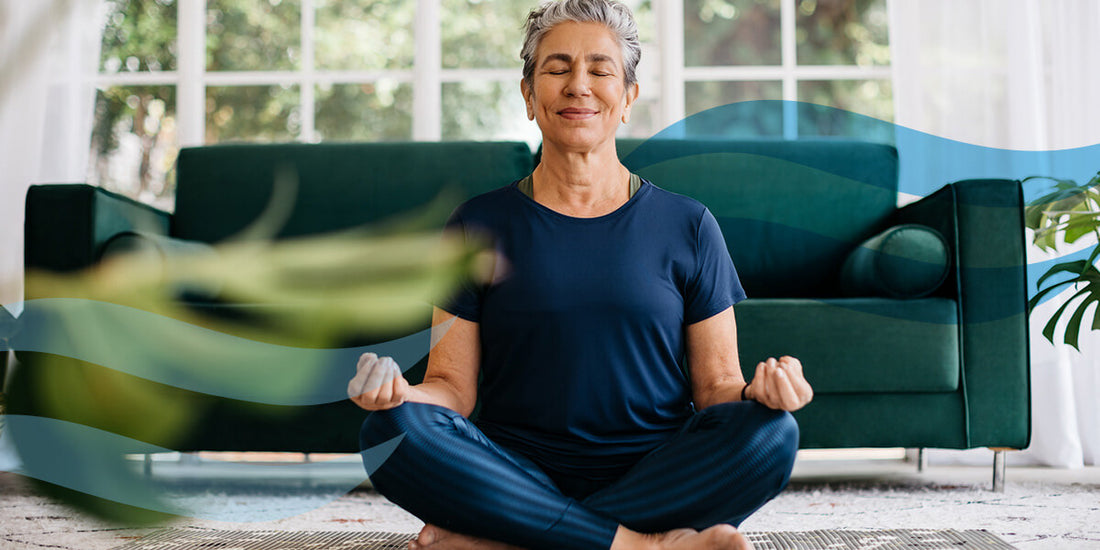Osteopenia quietly affects over 34 million people in the United States. Over half of Americans over the age of 50 may experience osteopenia, and researchers expect this number to increase in correlation with an aging population.
This condition weakens your bones, increases the risk of fractures and can potentially lead to osteoporosis. To help combat osteopenia, we compiled a comprehensive guide to natural remedies for osteopenia. From living an active lifestyle to other alternative osteopenia treatments, we aim to help you fortify your bone health.
What Is Osteopenia?
Osteopenia is a condition where bone mineral density (BMD) decreases below the normal range. A low BMD means fewer bone minerals, resulting in weaker bones.
The difference between osteopenia and osteoporosis is their severity. Osteoporosis is a more severe condition than osteopenia. Although it's not always the case, some individuals with osteopenia may develop osteoporosis later on.
It can be challenging to identify signs and symptoms of osteopenia, and too often, the first diagnosis of osteoporosis occurs in the emergency room following a bone fracture. It is important to get a bone density scan as early as possible, right before or early into menopause. This can serve as a reference scan for you and your physician. Many women see an initial decrease in BMD immediately following menopause but then stabilize and do not progress to osteoporosis. If you believe you have osteopenia, you can undergo a bone density test, also known as a DEXA (or DXA) scan. Primary care providers will also likely discuss and order this test routinely for women 65 and older and men 70 and older.
This scan measures your bone density, strength, and health in a noninvasive way. A DEXA scan will give you a T- and Z-score. T-scores compare your bone density to that of a healthy person, while Z-scores compare your bone density to the average bone density of people of the same sex, age, and size. Here are the different T-levels:
- -1 and higher: Normal.
- Between -1 and -2.5: Osteopenia.
- -2.5 or lower: Osteoporosis.
These are the Z-levels:
- Between +1 and +2: Bone density is higher than average.
- 0: Bone density is average.
- Between -1 and -2.5: Bone density is lower than average.
- -2.5 or lower: This score or lower indicates secondary osteoporosis.
Some are nervous about getting a traditional DEXA scan because of a fear of the radiation exposure. While it is true that DEXA does use radiation, the dose is very small and experts agree that the results are worth the small risk. However, there is now a new non-radiation method for determining bone scans, it's called REMS and it uses ultrasound instead of X-rays to measure bone density and fracture risk. It was recently approved by the FDA and it is available in the US in certain limited locations. The company is Echolight. You can find out more here.
Your bones are living tissue. They gradually build up from birth to adulthood based on your sex and age. By age 30, you'll achieve your peak bone mass. In the following years, your bones will start to break down faster than they can build up. While this can be a contributor to osteopenia, the natural process of bones breaking down does not always mean you'll develop osteopenia as you age.
Some other causes of osteopenia include:
- A sedentary lifestyle.
- Poor nutrition with calcium or vitamin D deficiencies.
- Excessive alcohol consumption.
- Smoking.
- Some medical conditions, such as hyperthyroidism or anorexia.
- Medications connected to the disease process, such as long-term steroid use or antiepileptics.
- Proton pump inhibitors which are used for acid reflux.
Can You Treat Osteopenia Without Medication?
To an extent, yes. While heritable factors make up 80% of your ability to gain and maintain BMD levels, there are modifiable factors to consider, including exercise, nutrition, body mass, and your hormonal and endocrine environment.

Healthcare professionals may recommend natural remedies for osteopenia, such as weight-bearing and light-impact exercises and a calcium- or vitamin D-rich organic diet, and in serious cases, medication. However, some doctors are wary of overmedication and the long-term effects of such medicines, as well as whether they actually decrease fracture risk.
As such, you can use your reference T and Z-scores to monitor your condition. If either are under -2, exercise regularly and get enough calcium and vitamin D. If levels are closer to -2.5, your doctor might prescribe medication.
Exercise Remedies for Osteopenia
Just like muscles, bones get stronger the more you use them, so exercise can be an excellent natural treatment for osteopenia. An ideal workout routine focuses on preserving and strengthening bone mass while enhancing balance.
Your routine can involve the following exercise types:
- Weight-bearing, light-impact exercises: Walking, aerobics, and tai chi are excellent exercises that utilize your body weight. While beneficial in other ways, activities like swimming and bicycling may not provide the weight-bearing advantages needed for bone density maintenance.
- Resistance training: Also known as strength training, you can add resistance to your exercises through free weights, exercise machines or resistance bands. Resistance exercises help maintain BMD and muscle support around your bones.
- Balance exercises: Balance-focused exercises can be as simple as standing on one leg or doing yoga. Balance exercises improve stability and contribute to bone health by challenging the body's equilibrium and reinforcing specific stabilizing muscles.
The Bone Health and Osteoporosis Foundation recommends daily weight-bearing exercise, muscle-strengthening sessions two to three times weekly, and daily balance exercises. While high-impact exercises can benefit bone density, individuals with a history of fractures must practice caution but can safely engage in low-impact exercises.
There is an additional exercise technology for poor bone health — and it involves impact, a safe, light-impact. This exercise utilizes mechanotransduction. Cellular mechanotransduction in bone involves bone cells' response to mechanical forces. These forces stimulate the bone cells to produce more bone tissue in areas experiencing stress.
When you apply weight-bearing exercises or mechanical loading to your bones, this process triggers signaling pathways that promote bone formation. As a result, mechanotransduction aids in increasing BMD and countering the effects of osteopenia.
The Juvent platform uses patented Micro-Impact Platform® technology. This platform provides resonant, low-magnitude mechanical stimulation for osteopenia to help enhance bone health. It's a unique mechanism that delivers controlled micro-impacts that help stimulate musculoskeletal health without causing discomfort.
Unlike low-magnitude mechanical stimulation, high-power, high-impact, whole-body vibration can be harsh on joints and tissues, potentially causing discomfort and injury, and is not recommended by the Bone Health and Osteoporosis Foundation (BHOF).
Nutritional Remedies for Osteopenia
Your diet can also be a natural osteopenia treatment. A well-balanced diet with nutritionally dense foods should help you meet most nutrient requirements.
Here is a list of essential nutrients your body needs to build and maintain healthy bones:
- Calcium: This nutrient is essential for your bones' strength and density. Some calcium-rich foods include dairy products, leafy greens, and fortified foods.
- Vitamin D: To complement your calcium intake, include vitamin D-rich foods to facilitate calcium absorption. Vitamin D is crucial for maintaining proper mineralization and bone health. Examples of vitamin D-rich foods include fatty fish and fortified dairy products.
- Vitamin K: This vitamin helps regulate calcium within bones and supports the synthesis of bone proteins. A few vitamin K-rich foods include broccoli, Brussels sprouts, and leafy greens. Older adults should consult with their doctor before increasing their vitamin K intake, as those on anticoagulation or blood thinner medications are typically advised to avoid excess consumption of vitamin K-rich foods.
- Magnesium: This mineral assists in activating vitamin D and thus aids calcium absorption. You can find foods rich in magnesium, such as nuts, seeds, legumes, and whole grains.
- Phosphorus: This essential mineral works alongside calcium in bone mineralization and maintenance. Some healthy foods high in phosphorus include seafood, poultry, and dairy products.
Some may need help getting their daily recommended nutrients, so doctors may recommend multivitamins or supplements to complement your diet. A bone health supplement for osteopenia, such as Juvent's HydroxyBMD² AM/PM, contains calcium, vitamin D, and other vital nutrients for bone health.
Moreover, clean water is vital for osteopenia care. Hydration helps support bone health and overall bodily functions. Staying hydrated with quality, mineral-rich water may help with holistic efforts in managing osteopenia. Juvent's British Berkefeld System offers reliable access to clean, mineral-rich water. It can complement osteopenia care by giving you optimal hydration that supports overall bone health and well-being.
Lifestyle Remedies for Osteopenia
A series of healthy lifestyle changes can help support bone health. Here are a few lifestyle changes you can add to your osteopenia self-care regimen:
- Avoiding smoking and alcohol: Limiting or avoiding smoking and excessive alcohol intake can help prevent BMD depletion.
- Getting enough sun: Moderate sun exposure can help your body produce vitamin D naturally, increasing BMD and calcium absorption.
- Managing stress: Stress-reducing activities like meditation, yoga or mindfulness can indirectly support bone health by reducing the impact stress can have on bone health.
- Maintaining a healthy body weight: Maintaining a healthy weight through proper nutrition and exercise prevents excessive bone stress. In turn, it can help reduce fall and fracture risks and support overall bone health.
- Implementing fall prevention strategies: Remove hazards at home, use assistive devices and practice balance exercises to help reduce the risk of fractures. This is particularly important for individuals with low bone density.
Remember, small and consistent lifestyle changes today can contribute to a better future for your bone health.
Strive for Strong Bones With Juvent
Take control of your bone health with Juvent. Our products and supplements are dedicated to supporting a healthy skeletal system, from our Micro-Impact Platform® to our HydroxyBMD² a.m. or p.m. supplement.
Juvent can help promote bone health by providing products and supplements that support a healthy skeletal system, aligning with the belief that overall wellness hinges on robust bone health.
Have any questions? Consider visiting our FAQ page. If you have any further inquiries, feel free to contact us, and we'll be in touch soon.
Join our newsletter to stay informed of the latest news and developments in bone health!


